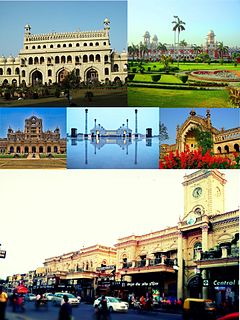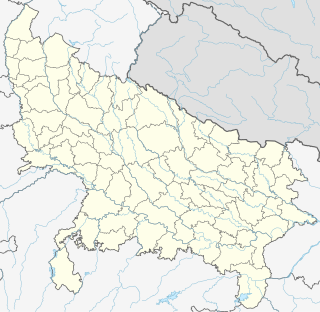This article possibly contains original research .(June 2020) |
This article needs additional citations for verification .(June 2020) |
This article possibly contains original research .(June 2020) |
This article needs additional citations for verification .(June 2020) |
The distribution of main workers in 2001 by different categories reveals that almost 21 percent are cultivators while another 6 percent are agricultural laborers. This is quite understandable in the district where rural population percentage is low as 37 percent. What is remarkable is that the share of population in rural areas has registered a decline from about 37 percent in 1991 to 36 percent in 2001. In the same row cultivators declined from 29.73 percent in 1991 to 21.06 percent and agricultural labourers declined from 8.70 percent to 6.50 percent in 2001. Agricultural fervor of the workforce shows a decline in favour of non-agricultural activities in the state.[ citation needed ]
The city is the headquarters of both:[ citation needed ]
Another business-promoting institutions that has a presence in Lucknow is the Confederation of Indian Industry (CII).
Among the bigger manufacturing units, Lucknow has:[ citation needed ]
The city's small-scale and medium-scale industrial units are located in the industrial enclaves of[ citation needed ]
Real estate is one of the many booming sectors of the Lucknow's economy. Lucknow has one of the fastest growing property rates in almost all the areas due to redevelopment of several areas (like Gomtinagar and Alambagh) by the present government.[ citation needed ]
The Ministry of Communications and Information Technology set up Software Technology Parks of India [3] in 2001. Currently, biotechnology and information technology are the two focus areas to promote economic development in and around the city.[ citation needed ] The Ministry of Science and Technology is setting up a biotech park [4] in the city. Lucknow is also one of the selected cities for the Smart City project of STPI.

Uttar Pradesh is a state in northern India. With over 200 million inhabitants, it is the most populated state in India as well as the most populous country subdivision in the world. It was established in 1950 after India had become a republic. It was a successor to the United Provinces (UP) during the period of the Dominion of India (1947–1950), which in turn was a successor to the United Provinces (UP) established in 1935, and eventually of the United Provinces of Agra and Oudh established in 1902 during the British Raj. The state is divided into 18 divisions and 75 districts, with the state capital being Lucknow, and Allahabad serving as the judicial capital. On 9 November 2000, a new state, Uttaranchal, was created from Uttar Pradesh's western Himalayan hill region. The two major rivers of the state, the Ganges and its tributary Yamuna, meet at the Triveni Sangam in Allahabad, a Hindu pilgrimage site. Other notable rivers are Gomti and Saryu. The forest cover in the state is 6.1% of the state's geographical area. The cultivable area is 82% of total geographical area and net area sown is 68.5% of cultivable area.

Lucknow is the capital city of the Indian state of Uttar Pradesh, and is also the administrative headquarters of the eponymous district and division. It is the fourteenth-most populous city and the twelfth-most populous urban agglomeration of India. Lucknow has always been a multicultural city that flourished as a North Indian cultural and artistic hub, and the seat of power of Nawabs in the 18th and 19th centuries. It continues to be an important centre of governance, administration, education, commerce, aerospace, finance, pharmaceuticals, technology, design, culture, tourism, music and poetry.

Mohan Meakin is a large group of companies which started with Asia's first brewery incorporated in 1855 by Edward Dyer at Kasauli in the Himalayan Mountains in India under the name Dyer Breweries.

Jaunpur is a city and a municipal board in Jaunpur district in the Indian state of Uttar Pradesh. It is located 228 km southeast of state capital Lucknow.

Unnao is the headquarters of Unnao district in Uttar Pradesh, India between Kanpur and Lucknow. Unnao is a large industrial city with three industrial suburbs around it. The city is famous for its leather, mosquito net, Zardozi and chemical industries. Unnao is an historical city with many historical buildings and structures. Trans Ganga City, a new satellite town of Unnao is being developed in order to develop Unnao as a major industrial and infrastructural hub as the region comes under Kanpur-Lucknow Counter Magnet Area. Unnao district is a part of Central Ganges Plain of the state covering an area of 4558 km2. The city is enlisted as a municipality of Kanpur metropolitan area and is the second largest city within the metropolitan area. nawabganj pakshi vihar located along NH27 is one of best place to see migratory birds which come from various countries during winter season and it has been included in the list of RAMSAR sites. Best time to visit this sanctuary is from november to march.

Barabanki district is one of the five districts of Faizabad division, in the central Awadh region of Uttar Pradesh, India. Barabanki city is the administrative headquarters of Barabanki district. Total area of Barabanki district is 3891.5 Sq. Km.

Jaunpur district is a district in the Varanasi Division of the Indian state of Uttar Pradesh. The district headquarters is Jaunpur which is situated on the banks of the Gomti River. It is located 228 km southeast of the state capital Lucknow. 65 km northwest of Varanasi and 732 km southeast of New Delhi. The district has two Lok sabha seats and nine Vidhan Sabha seats. According to the 2011 census, Jaunpur has a gender ratio of 1,018 females to 1,000 males, the highest in Uttar Pradesh. The main languages are Hindi, Awadhi, Bhojpuri.

Bairgania is a town and notified area in the Sitamarhi district in the state of Bihar, India. Bairgania is one of the blocks of Sitamarhi districts and is a border of India that links Nepal via Rautahat District through a custom checkpoint. Bairgania is the first town of India that is located on the bank of the Bagmati River.It has a good government medical hospital and experience doctors such as alumni from PMCH.

Gosainganj, also spelled Goshainganj or Gosaiganj is a town and nagar panchayat in Lucknow district of Uttar Pradesh, India. It is the seat of a community development block, which is included in the tehsil of Mohanlalganj. As of 2011, its population is 9,649, in 1,685 households. The starting point of the Purvanchal Expressway i.e. Chand Saray village is situated 2.5 km away from Gosainganj.

Maudaha is a city and a Municipal Board in Hamirpur district in the Indian state of Uttar Pradesh.The district participated in the elections of 1937 which were conducted under the Government of India Act of 1935, in order to organize activities of the Congress in the district Jawaharlal Nehru and Abul Kalam Azad visited Maudaha in 1937. With the outbreak of the Second World War in 1939, however, the Congress ministries resigned on the issue of India's forced participation in it. Agriculture is the main occupation of the people.

Beer in Asia began when beer was produced in Sumer, Mesopotamia circa 6000 years ago. It was introduced by Europeans in the 19th century, with modern breweries established in British India, the Dutch East Indies, China, and Japan. Asia's first modern brewery was established in 1830 in India entirely using European brewing technology.

The economy of Uttar Pradesh is the third largest of all the states of India. According to a report published by the Ministry of Statistics and Programme Implementation, Government of India the nominal GDP of the state for the year 2020-21 is ₹ 17.05 lakh crore. The largest Indian state, Maharashtra based on nominal GDP, has an urban population of 5,08,18,259, while Uttar Pradesh has an urban population of 4,44,95,063. According to the 2011 census report, 22.76% of Uttar Pradesh's population lives in urban areas. The state has 7 cities with populations exceeding 10 lakh each. After partition in 2000, the new Uttar Pradesh state produces about 92% of the economic output of the old Uttar Pradesh state. Currently, the poverty rate stands at 26.4%, just above the national average.

The economy of Madhya Pradesh refers to the economic growth with respect to the Indian state of Madhya Pradesh. It grew 12% in GDP for the year of 2011–12, for which it received an award from then President Pranab Mukherjee in January 2013 for improving its tourism, medical and infrastructural growth. The economy of Madhya Pradesh is significantly agrarian which is reflecting rapid strides towards industrial and service sectors as well. The Indore,Bhopal and Jabalpur districts are the top 3 districts in the state's larger economy.
China has seen double-digit growth in its biotechnology industry and has gone from being one of the slowest to one of the fastest nations in the adoption of new biotechnologies. The biotech sector is seen in China and internationally as a core area of national scientific and economic development. The main national biotech body in the country is the China National Center for Biotechnology Development. The CNCBD is an organization established on November 3, 1983, under the Ministry of Science and Technology with the approval of the State Council. CNCBD is the sole national center to coordinate and implement the national S&T program in Biotechnology and Health.

The state of Uttar Pradesh had a long tradition of learning, although it had remained mostly confined to the elite class and the religious establishment.

Ambedkar Memorial Park, formally known as Dr. Bhimrao Ambedkar Samajik Parivartan Prateek Sthal, is a public park and memorial in Gomti Nagar, Lucknow, Uttar Pradesh, India. The memorial is dedicated to B. R. Ambedkar, the 20th century Indian polymath and the major author of the Indian Constitution.

The economy of Indore is notable for its importance in the areas of trading, finance and distribution in Madhya Pradesh. Indore District's nominal GDP was recorded at INR 43,356 crores in 2016-17, as per the Directorate of Economics and Statistics. A recent study by Dainik Bhaskar estimates GDP(PPP) at Rs. 1,74,000 crores for the year 2020-21. Indore has the largest economy in Madhya Pradesh and is the business and trading capital of the state. Pithampur Industrial Area, near Indore houses more than 1200 industrial units. Pithampur is a part of Indore Metropolitan Region, though its economic contributions are not accounted in Indore District. Located at the crossroads of western and central India, Indore has relatively good connectivity and has been the hub of trade and commerce, not only for the state but also for western India. Cotton textiles are the city's major product, but iron and steel, chemicals, and machinery are also manufactured there. The textile industry is in decline and is being replaced by a variety of new manufacturing industries. Still it is the one of the largest textile industry in India. Old-time industries which flourished in Indore were handloom, hand dyeing, manufacture of niwar, oil extraction by ghani, manufacture of bamboo mats, baskets, metal utensils, embossing and engraving of gold and silver ornaments, shellac industry, etc. Ayurvedic and Unani medicines from roots and herbs were manufactured under state patronage. Indore has one of the largest trans-shipment centers for truck transport.

Sahibzadi Asma Hussain is an Indian fashion designer.

Sarojaninagar, also spelled Sarojini Nagar, is a community development block in Lucknow district, Uttar Pradesh, India. It is part of the tehsil of Lucknow and it includes 90 villages. As of 2011, its population was 224,045, in 40,923 households.